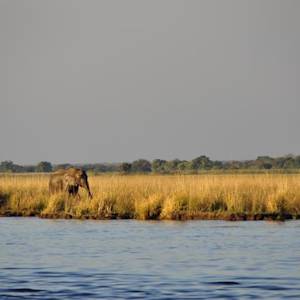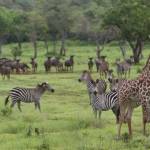The Mau-Mara-Serengeti
2023 CE • East Africa
"The Mau-Mara-Serengeti area is one of the oldest, most complex and least disturbed natural environments on Earth – barely changed in a million years . . . This amazing and huge place includes Kenya’s Mau forest (the biggest natural mountain forest left in east Africa), the basin of the Mara river (lifeblood of the region), and the Serengeti plain (famous grasslands crossing into Tanzania). It’s the venue for one of the world’s most spectacular wildlife migrations. Each year hundreds of thousands of wildebeest, zebra and gazelle travel from the Serengeti up to Kenya’s Maasai Mara (and back again), feeding on the lush grass that springs up after seasonal rains . . . Thousands of species share the Mau-Mara-Serengeti area – from the iconic, umbrella-shaped acacia trees that typify the landscape to the elephants, rhinos, giraffes and lions that roam between them . . . In recent decades illegal logging, charcoal production and conversion of land for tea-growing and cattle-grazing have reduced the Mau forest severely — which increases the likelihood of soil erosion, flash floods and silted rivers. Through the Mau-Mara-Sergengeti, a variety of land-uses threaten the sustainability of this unique landscape . . . The Mara river is under huge pressure — water levels and quality have changed dramatically over recent decades because of agriculture, industrial activity, population growth and tourism . . . And climate change is making the problems worse. "
"Mau-Mara-Serengeti," World Wildlife Fund.
Image: Daniel Rosengren, CC BY 4.0, via Wikimedia Commons


Learn about Maya Lin’s fifth and final memorial: a multi-platform science based artwork that presents an ecological history of our world - past, present, and future.

Discover ecological histories and stories of former abundance, loss, and recovery on the map of memory.

Learn how we can reduce our emissions and protect and restore species and habitats – around the world.

See how art can help us rethink the problems we face, and give us hope that each one of us can make a difference.

Help make a global memorial something personal and close to home. Share your stories of the natural world.


